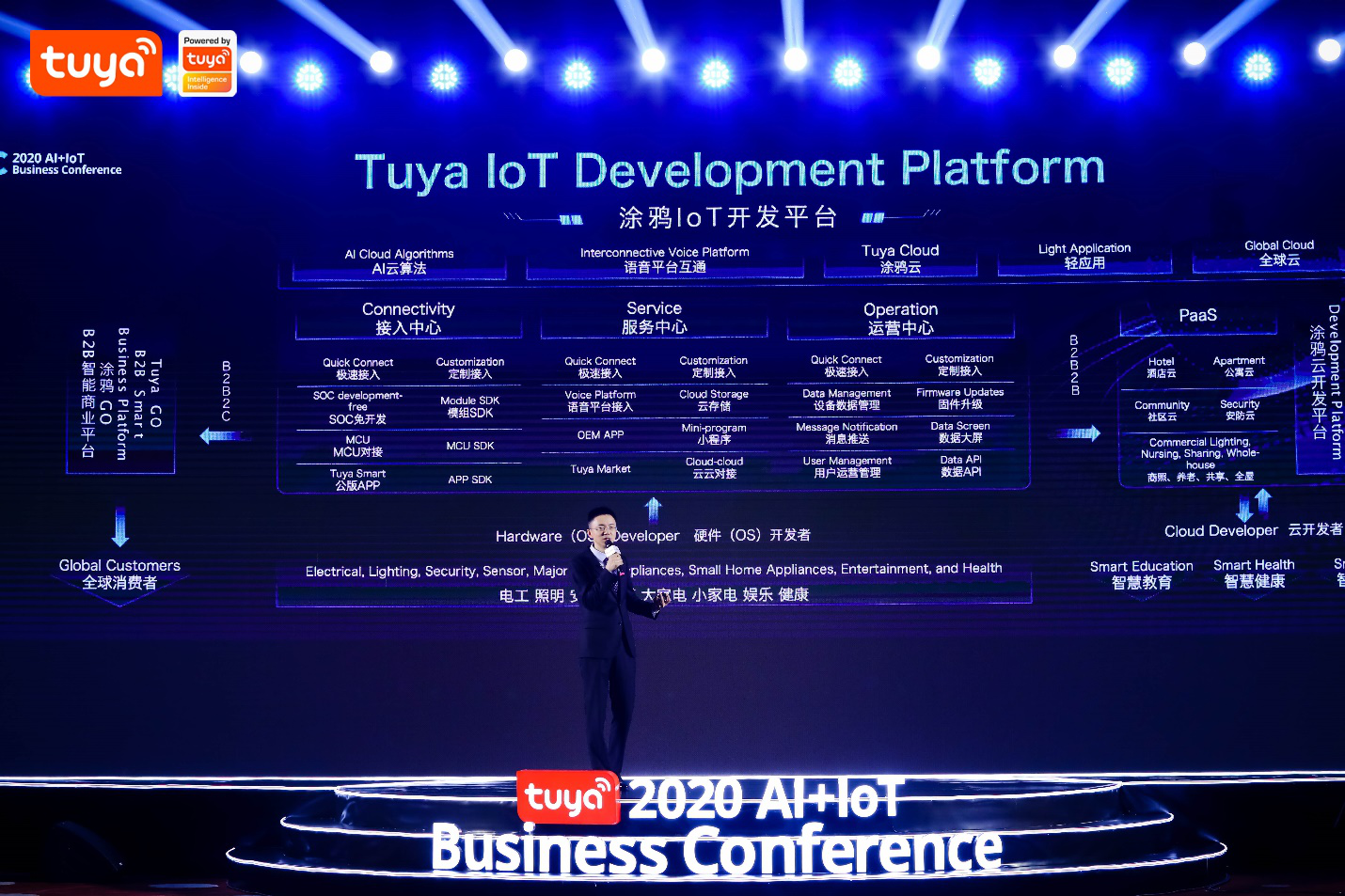
COVID-19 has laid bare some loopholes that people encounter surrounding AIoT and other popular technologies. Certainly, the pandemic has been terrible for the global economy, but it is also a golden opportunity to honestly assess the capabilities and applications of our technologies so that we can use it as a stepping stone for near future AIoT development.
At Tuya Smart’s latest AI+IoT Business Conference, industry leaders from Google, Lenovo, Gree, TCL, Zigbee Alliance and more discussed on wide ranging topics about the how the new decade of IoT products will look like and the key message here is about ‘interconnectivity’. Below, I would like to share some points surrounding this keyword, and how the AI industry can learn from COVID-19 to enhance what we’ve been doing well and improve on the weaknesses that have been exposed.
The digital revolution is still on the way
Any crisis is always a good time to ‘stress test’ our systems, and the pandemic is no exception. The COVID pandemic has shown us that even though technology has advanced, people are still slow to adopt digital solutions. There are a lot of reasons for this, but in the technology space, even though we’ve been quick to adapt to Zoom and other workarounds, one lesson here is that it is users who make the technologies useful and the tech industry by and large have a lot of work to put users at the forefront of design and development.
This pandemic is being fought on the basis of numbers and data. AIoT and machine learning help us in collecting, analyzing and understanding a vast quantity of data. However, the numbers and data are still in need of more human element. AI promised to relieve our doctors and healthcare systems, but in the end, our doctors are still more tired than expected. We need to accept these instances and search for ways of interconnectivity between humans, between machines, and human-machine interactions. But at the same time, we are seeing more companies in the AIoT industry is involving in the healthcare industry to develop Intelligent air monitor, smart disinfection, antivirus diffuser, etc. by leveraging the latest technologies.
Going back to basics: focusing on the users
In times of social distancing, technology has become even more important to connect people together, be it for business, social, or even important events like weddings. Such circumstances present a good opportunity for companies in the AIoT industry to better understand user behavior and gather data for training models. Here, reaching out and connecting with users is key to take advantage of all the screen time they are spending with their technology.
This is one of the main objectives that Tuya wants to accomplish with its Cloud Development Platform. Already, over 90,000 different products are being powered by the platform, and interconnectivity is key when more than 180,000 global developers come together to work on projects. IoT companies have the advantage and should seek ways to improve the human-machine relationship so that more data will translate to better improvements for users to stay connected with their goals and lifestyles.
The Tuya Cloud Development Platform will be facilitating exchanges and share data amongst developers. Tuya’s President and Co-Founder, Leo Chen said at the conference keynote, “Even though the pandemic is keeping us apart, it is bringing us together in a new era of AIoT. The core strategy of Tuya in 2020 is to open our platform to create fertile soil for AIoT developers.” Tuya expects its open developer platform to enable a thousand development projects for more than 20,000 cloud developers, facilitating over 40 million daily AI voice interactions and processing 3 billion daily messages, thereby providing developers a way to create customized PaaS and SaaS-level solutions.
In a post-COVID world, AIoT is about automation
Such human-machine relationships will not be possible without AI and IoT, and involves a complex web of interconnected devices working together. During one of the global roundtables hosted by Jeff Immelt, former CEO and Chairman of GE, Venture Partner of NEA, now Tuya’s US Chairman, he commented after the talk with executives from Lenovo, Havells, Merkury, and Status, that AIoT “is really a pervasive theme. I think the good news for smart homes is everybody is sitting at home and finally they figure out how all these devices work. Basically now, more consumers are aware of the technologies. One truth is that the world is going to change; there is challenges; but the other truth is that there is going to be big opportunities.”
The way forward
The world of data science has been coming out stronger during this lockdown and the interest and importance given to the subject are on the rise. AI and IoT-powered mechanics and operations have already made it easier to manage various spaces with lower risks and this trend of turning to AIoT is bound to increase in the coming years. The question now that lies ahead of us as an industry is: How are we going to define it for the next generations to come?
Contact person: Gloria Yuan
Email: gloriayuan@tuya.com
Company: Tuya






